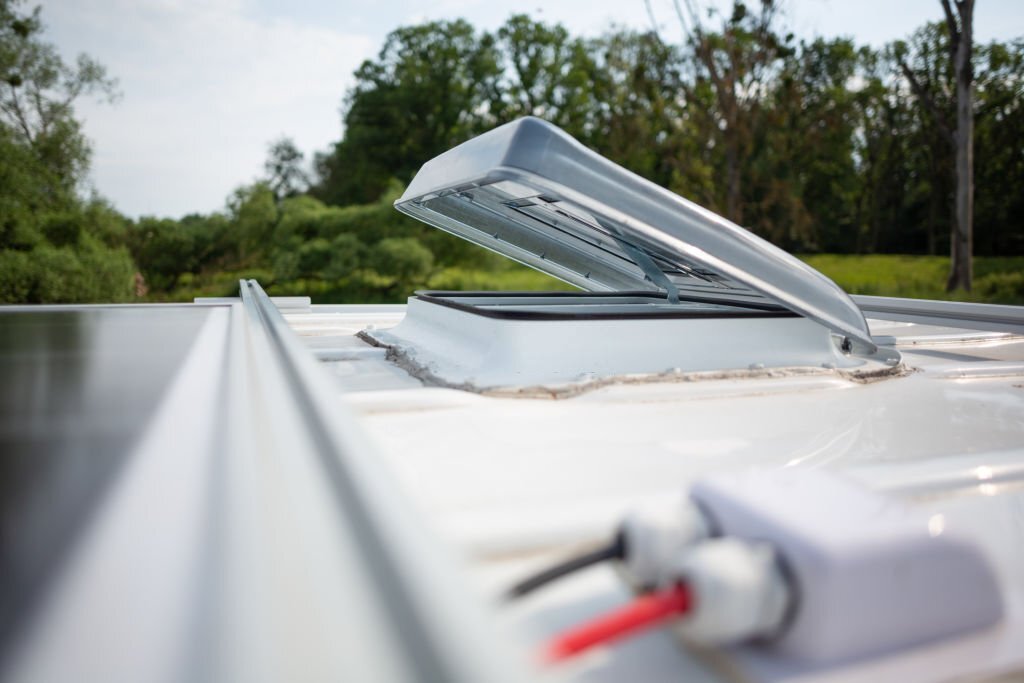Introduction to Mobile Home Roof Over
A mobile home roof over is a roofing system that is installed over the existing roof of a mobile home. It is a popular option for homeowners who want to improve the energy efficiency, curb appeal, and value of their mobile homes. A roof over provides protection against weather elements and can be customized to suit the homeowner’s preferences and budget.
There are several reasons why homeowners opt for a roof over instead of completely replacing their mobile home’s roof. One of the main reasons is cost-effectiveness. Installing a roof over is generally more affordable than a full roof replacement. Additionally, a roof over can be installed quickly, minimizing disruption to the homeowner’s daily life.

Benefits of a Mobile Home Roof Over
a) Improved energy efficiency: One of the major benefits of a mobile home roof over is improved energy efficiency. The additional layer of insulation provided by the roof over helps to keep the interior of the home cooler in the summer and warmer in the winter. This can result in significant energy savings and a more comfortable living environment.
b) Enhanced curb appeal: Another advantage of a mobile home roof over is enhanced curb appeal. The new roof can transform the look of the mobile home, giving it a fresh and updated appearance. Homeowners can choose from a variety of roofing materials and designs to match their personal style and preferences.
c) Increased home value: A roof over can also increase the value of a mobile home. Potential buyers are often attracted to homes with newer roofs, as it indicates that the home has been well-maintained and is less likely to have issues with leaks or other roofing problems. Installing a roof over can make a mobile home more marketable and potentially increase its resale value.
d) Protection against weather elements: Lastly, a mobile home roof over provides added protection against weather elements such as rain, snow, and wind. The additional layer of roofing material helps to prevent leaks and water damage, ensuring that the interior of the home remains dry and safe. This can help to extend the lifespan of the mobile home and reduce the need for costly repairs in the future.
Types of Mobile Home Roof Over
a) Metal roof over: A metal roof over is a popular choice for mobile homes due to its durability and longevity. Metal roofs are resistant to fire, rot, and insect damage, making them a low-maintenance option. They are also energy-efficient and can help to reduce heating and cooling costs. Metal roofs come in a variety of styles and colors, allowing homeowners to customize the look of their mobile home.
b) Shingle roof over: Shingle roofs are another common option for mobile home roof overs. They are affordable, easy to install, and come in a wide range of colors and styles. Shingle roofs provide good protection against weather elements and can last for many years with proper maintenance. However, they may require more frequent repairs and replacement compared to metal roofs.
c) Flat roof over: Flat roofs are typically found on older mobile homes. Installing a roof over on a flat roof can be more challenging, as it requires additional structural support and proper drainage systems. However, with the right materials and installation techniques, a flat roof over can provide excellent protection and durability.
Factors to Consider Before Installing a Mobile Home Roof Over
a) Local building codes and regulations: Before installing a mobile home roof over, it is important to check with local building codes and regulations. Some areas may have specific requirements for roof installations, such as minimum pitch requirements or restrictions on certain roofing materials. It is important to ensure that the roof over meets all necessary regulations to avoid any legal issues in the future.
b) Budget: Another important factor to consider is the budget for the roof over installation. The cost of a roof over can vary depending on factors such as the size of the mobile home, the type of roofing material chosen, and any additional features or customization options. It is important to set a budget and obtain quotes from reputable contractors to ensure that the project can be completed within the desired price range.
c) Climate and weather conditions: The climate and weather conditions in the area where the mobile home is located should also be taken into consideration. Different roofing materials have different levels of durability and resistance to weather elements. For example, metal roofs are more resistant to high winds and hail, while shingle roofs may be more prone to damage in areas with heavy snowfall. It is important to choose a roofing material that is suitable for the local climate to ensure long-term performance and protection.
d) Roofing material and design: The choice of roofing material and design is another important factor to consider. Different materials have different aesthetic qualities, durability, and maintenance requirements. Homeowners should research and compare different options to find the best fit for their needs and preferences. It is also important to consider the design of the roof over, including factors such as slope, ventilation, and insulation.

Steps Involved in Installing a Mobile Home Roof Over
a) Inspection and preparation of the existing roof: The first step in installing a mobile home roof over is to inspect the existing roof for any damage or issues that need to be addressed. This may include repairing leaks, replacing damaged shingles or panels, or reinforcing the roof structure if necessary. Once any necessary repairs have been made, the existing roof should be thoroughly cleaned and prepared for the installation of the roof over.
b) Installation of the roof frame: The next step is to install the roof frame, which will provide support for the new roofing material. The frame should be securely attached to the existing roof structure, ensuring that it is level and properly aligned. The frame can be made from wood or metal, depending on the homeowner’s preferences and budget.
c) Installation of the roofing material: Once the roof frame is in place, the roofing material can be installed. This may involve laying down sheets of metal or shingles, depending on the chosen material. The roofing material should be installed according to the manufacturer’s instructions, ensuring that it is properly secured and sealed to prevent leaks and water damage.
d) Finishing touches: After the roofing material has been installed, any necessary finishing touches can be added. This may include installing gutters and downspouts, adding insulation to improve energy efficiency, and applying a protective coating or sealant to enhance durability and weather resistance. The final step is to clean up the work area and ensure that all debris and materials are properly disposed of.
Materials Required for a Mobile Home Roof Over
a) Roofing material: The choice of roofing material will depend on factors such as budget, durability, and aesthetic preferences. Common options include metal panels, asphalt shingles, and rubber membranes. It is important to choose a material that is suitable for the local climate and meets all necessary building codes and regulations.
b) Roof frame: The roof frame provides support for the roofing material and helps to distribute the weight evenly across the mobile home’s structure. It can be made from wood or metal, depending on the homeowner’s preferences and budget. The frame should be securely attached to the existing roof structure to ensure stability and durability.
c) Insulation: Insulation is an important component of a mobile home roof over, as it helps to improve energy efficiency and reduce heating and cooling costs. There are several types of insulation available, including fiberglass batts, spray foam, and rigid foam boards. The choice of insulation will depend on factors such as budget, climate, and desired R-value.
d) Fasteners and screws: Fasteners and screws are used to secure the roofing material and frame in place. It is important to choose high-quality fasteners that are suitable for the chosen roofing material and can withstand the weather conditions in the area. Using the wrong type of fasteners can lead to leaks and other issues.
e) Sealant: Sealant is used to seal joints, seams, and other areas where water could potentially penetrate the roof. It is important to choose a sealant that is compatible with the chosen roofing material and can withstand the weather conditions in the area. Proper sealing is essential to prevent leaks and water damage.
Cost of Installing a Mobile Home Roof Over
a) Factors that affect the cost: The cost of installing a mobile home roof over can vary depending on several factors. These include the size of the mobile home, the type of roofing material chosen, any additional features or customization options, and the complexity of the installation. Other factors that can affect the cost include labor costs, permits and inspections, and any necessary repairs or modifications to the existing roof structure.
b) Average cost range: The average cost of installing a mobile home roof over can range from $5,000 to $15,000 or more, depending on the factors mentioned above. It is important to obtain quotes from reputable contractors to get an accurate estimate for the specific project.
c) Financing options: There are several financing options available for homeowners who want to install a mobile home roof over but may not have the funds available upfront. These include personal loans, home equity loans or lines of credit, and financing programs offered by roofing contractors. It is important to carefully consider the terms and interest rates of any financing option before making a decision.
Maintenance Tips for a Mobile Home Roof Over
a) Regular inspection and cleaning: Regular inspection and cleaning are essential for maintaining the condition and performance of a mobile home roof over. Homeowners should inspect the roof for any signs of damage or wear, such as loose or missing shingles, rusted metal panels, or cracked sealant. Any issues should be addressed promptly to prevent further damage.
b) Repairing leaks and damages promptly: If a leak or other damage is detected, it is important to repair it as soon as possible. Ignoring leaks can lead to water damage and mold growth, which can be costly to repair. Homeowners should hire a professional roofing contractor to assess and repair any issues with the roof over.
c) Proper ventilation: Proper ventilation is important for maintaining the longevity and performance of a mobile home roof over. It helps to prevent moisture buildup and reduce the risk of mold and rot. Homeowners should ensure that the roof over has adequate ventilation, including ridge vents, soffit vents, and gable vents.
d) Professional maintenance services: It is recommended to hire a professional roofing contractor for regular maintenance services. They can inspect the roof over, clean gutters and downspouts, replace damaged shingles or panels, and perform any necessary repairs or maintenance tasks. Regular professional maintenance can help to extend the lifespan of the roof over and prevent costly issues in the future.
Frequently Asked Questions about Mobile Home Roof Over
How long does a roof over last?
The lifespan of a mobile home roof over can vary depending on factors such as the type of roofing material chosen, the quality of installation, and the level of maintenance. On average, a well-maintained roof over can last between 20 and 30 years.
Can a roof over be installed on any type of mobile home?
In most cases, a roof over can be installed on any type of mobile home. However, it is important to consider factors such as the existing roof structure, local building codes and regulations, and the compatibility of the chosen roofing material with the mobile home’s design.
Is a permit required for a roof over installation?
The requirement for a permit will depend on local building codes and regulations. In some areas, a permit may be required for a roof over installation, while in others it may not be necessary. It is important to check with the local building department to determine if a permit is required.
Can a roof over be installed on a flat roof?
Yes, a roof over can be installed on a flat roof. However, it may require additional structural support and proper drainage systems to ensure that water does not accumulate on the roof. It is important to consult with a professional roofing contractor to determine the best approach for installing a roof over on a flat roof.
Conclusion: Transform Your Mobile Home with a Roof Over
In conclusion, a mobile home roof over is a great option for homeowners who want to improve the energy efficiency, curb appeal, and value of their mobile homes. It provides protection against weather elements and can be customized to suit the homeowner’s preferences and budget. There are several types of mobile home roof overs available, including metal roofs, shingle roofs, and flat roofs. Before installing a roof over, it is important to consider factors such as local building codes, budget, climate, and roofing material and design.
The installation process involves several steps, including inspection and preparation of the existing roof, installation of the roof frame, installation of the roofing material, and finishing touches. Regular maintenance is essential for ensuring the longevity and performance of a mobile home roof over. By following these tips and considering a roof over for your mobile home, you can transform your home and enjoy the many benefits it offers.


